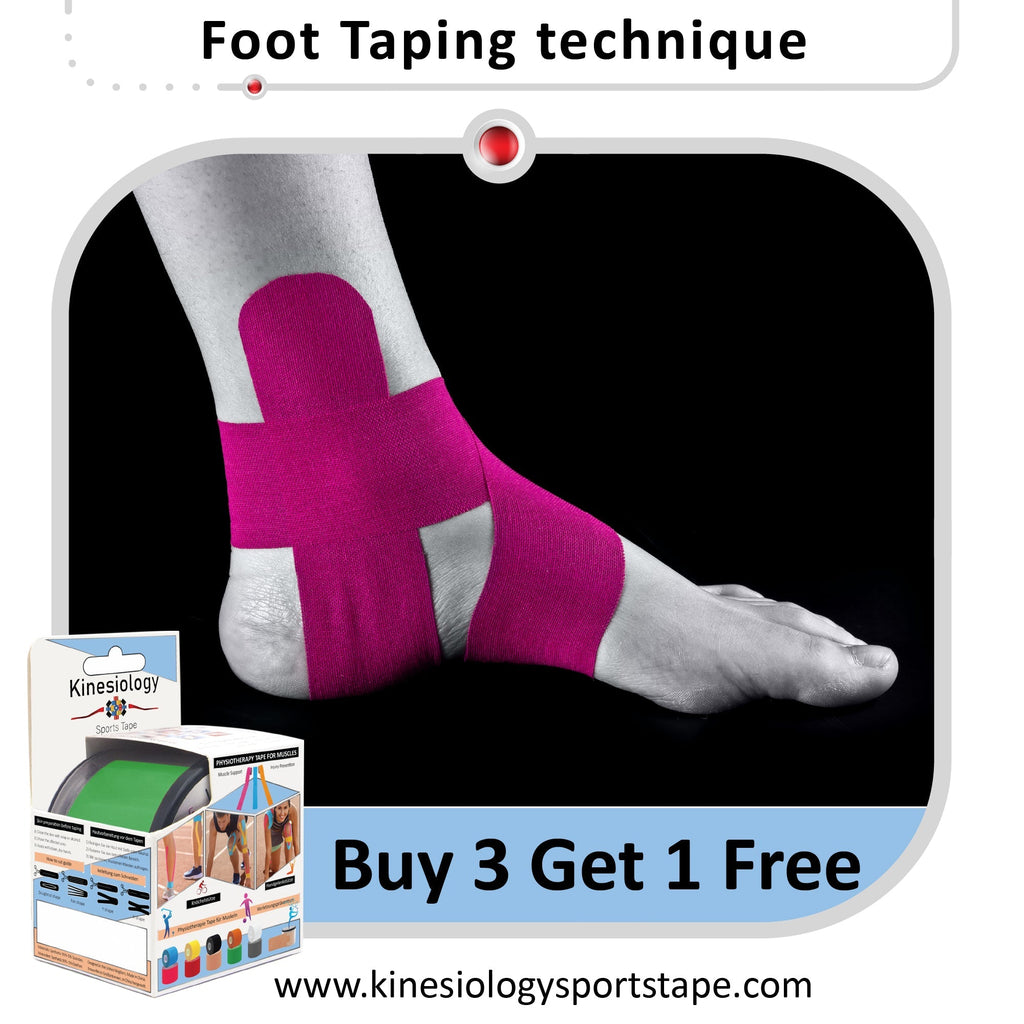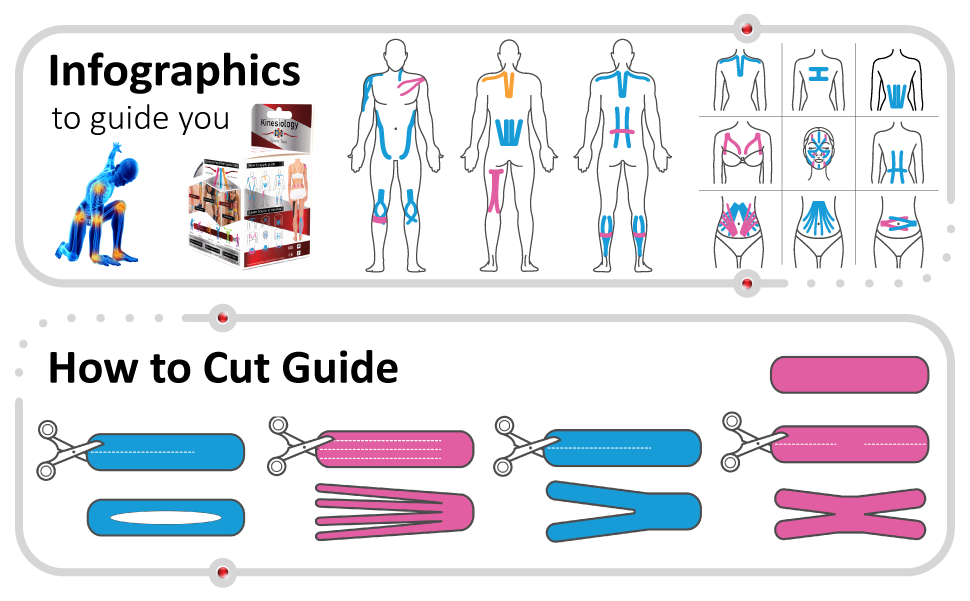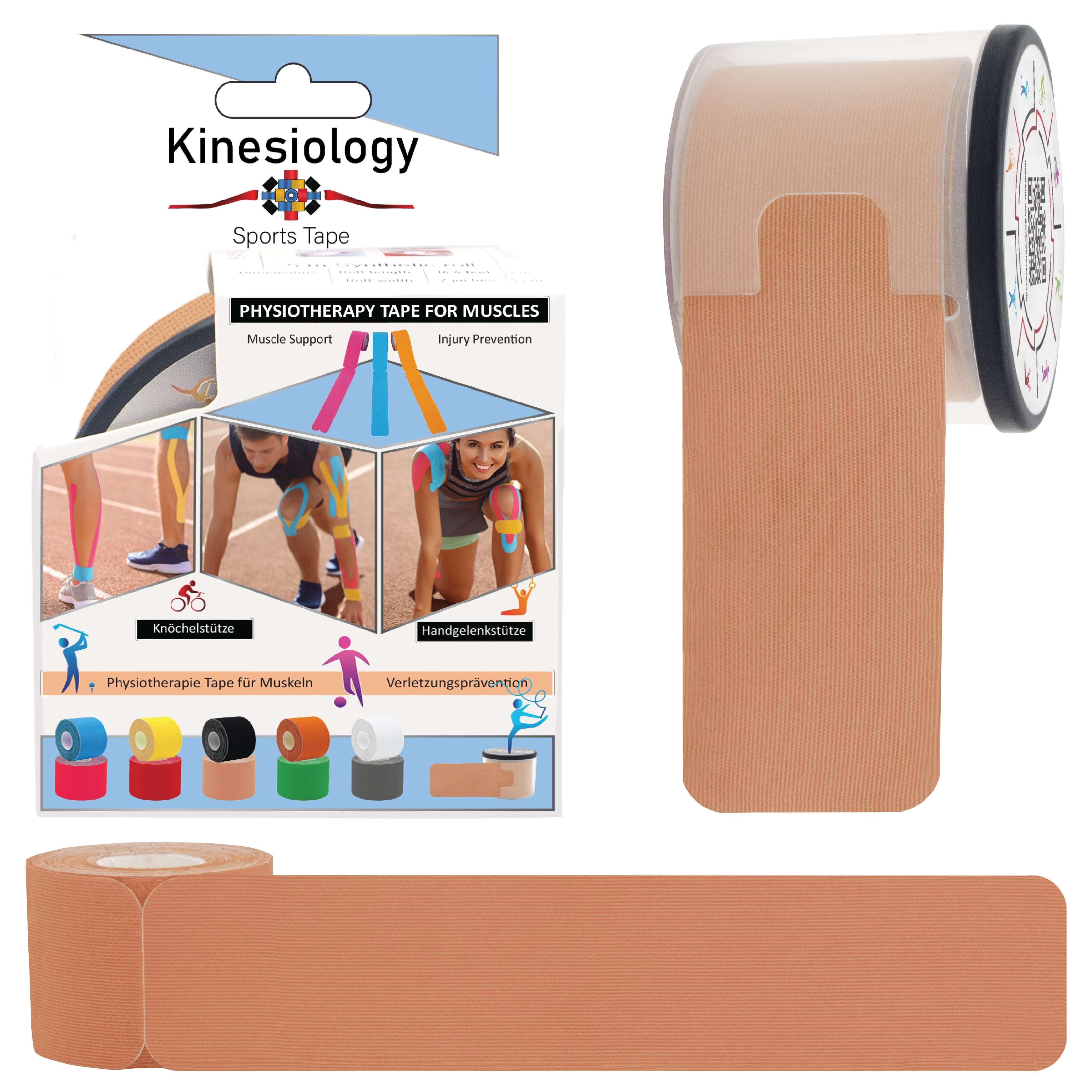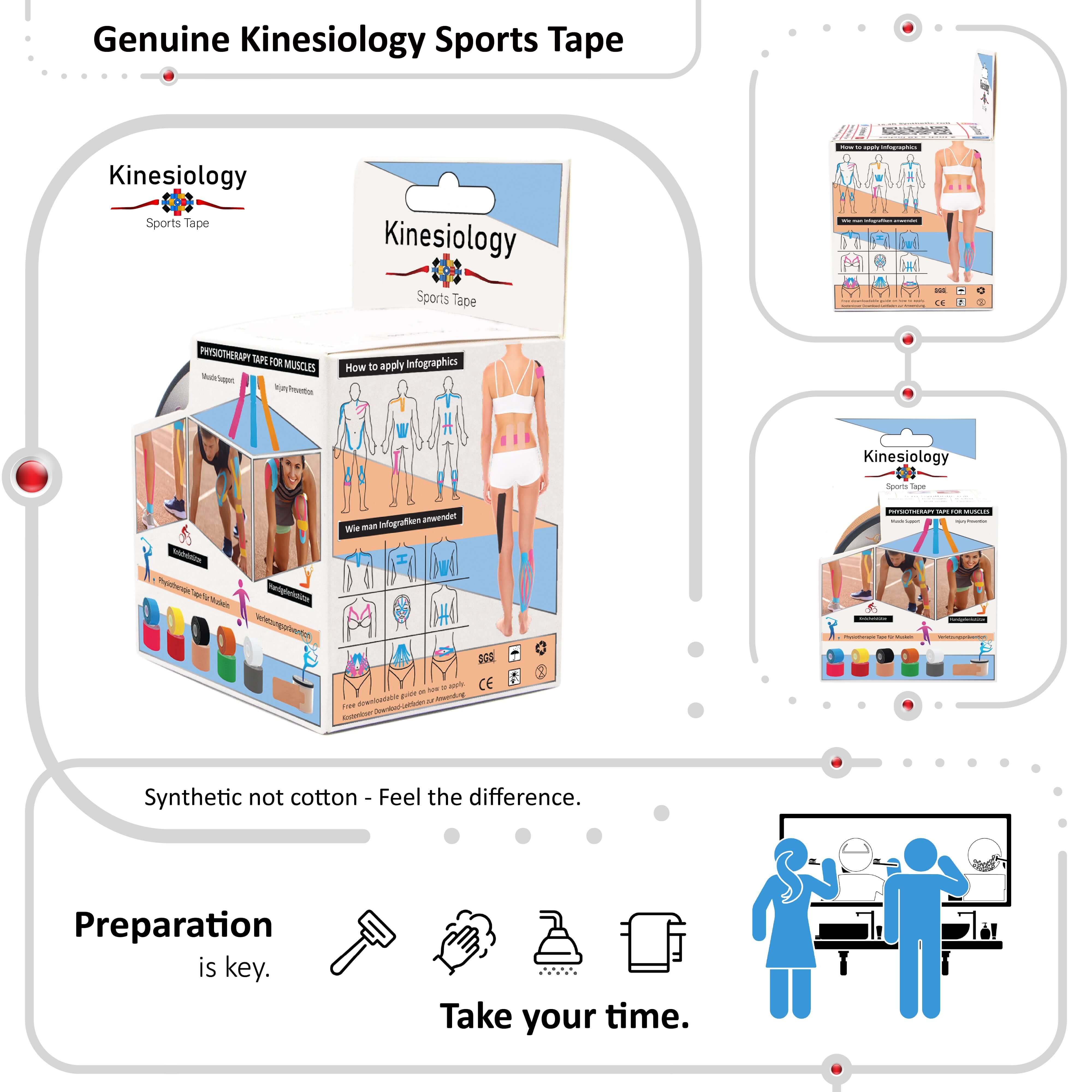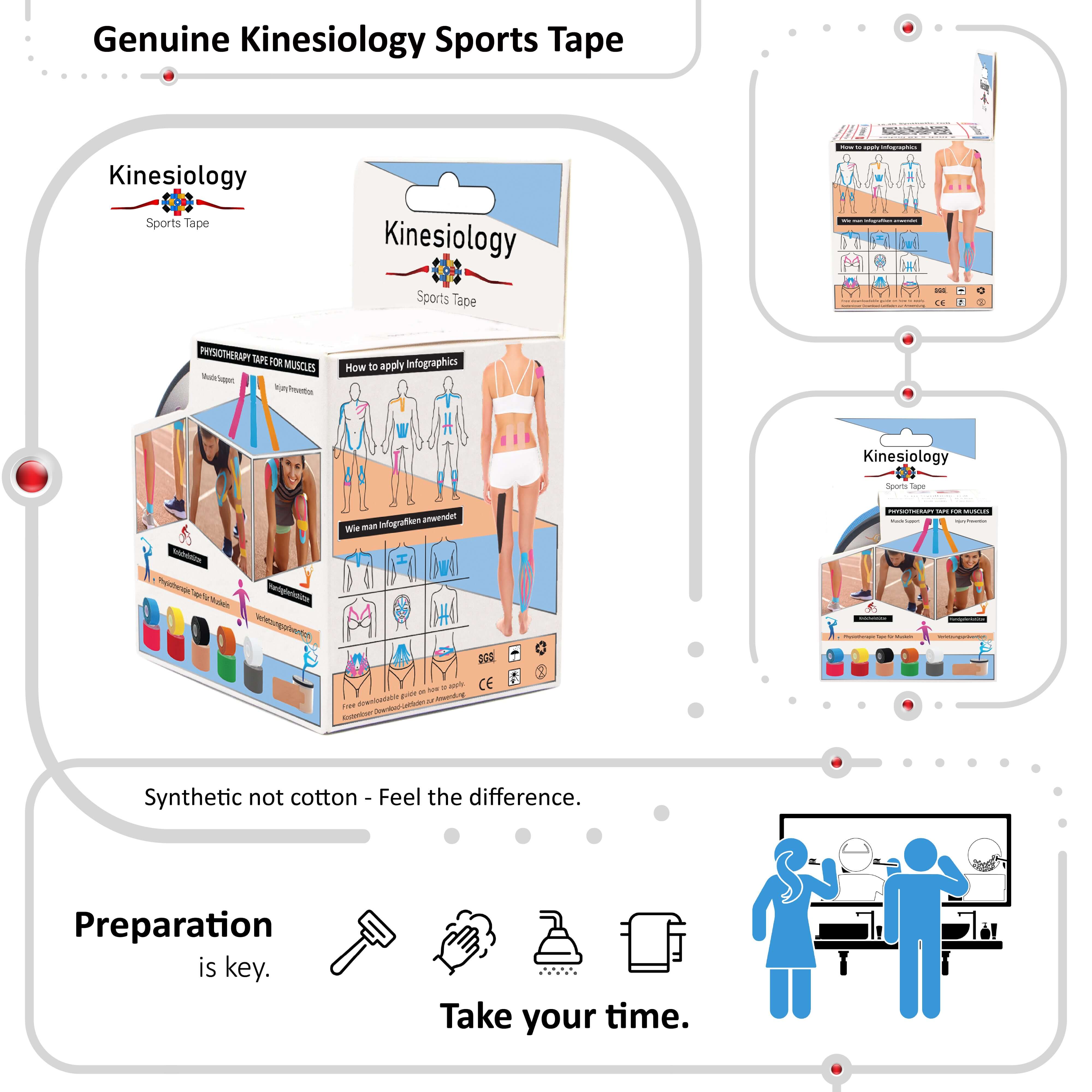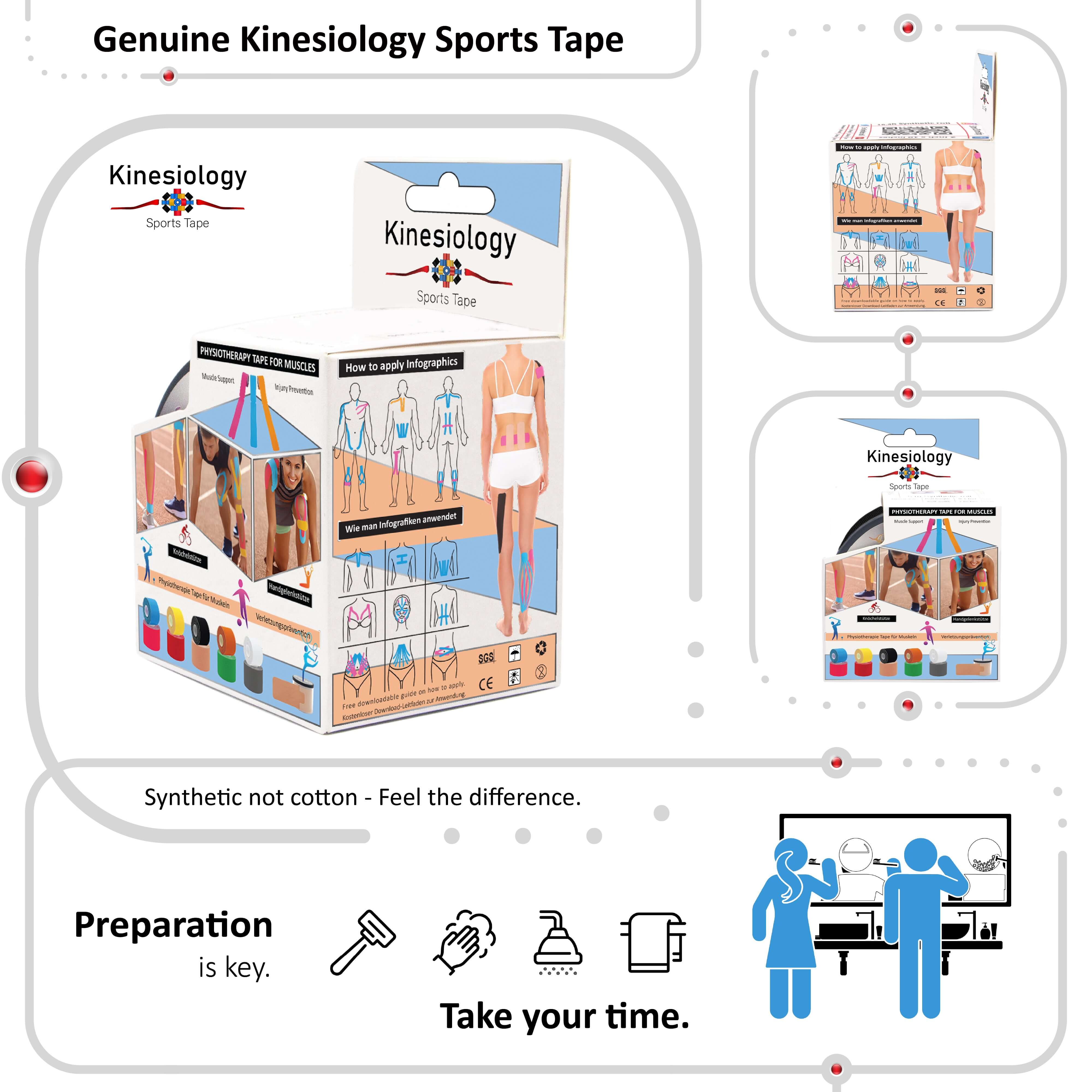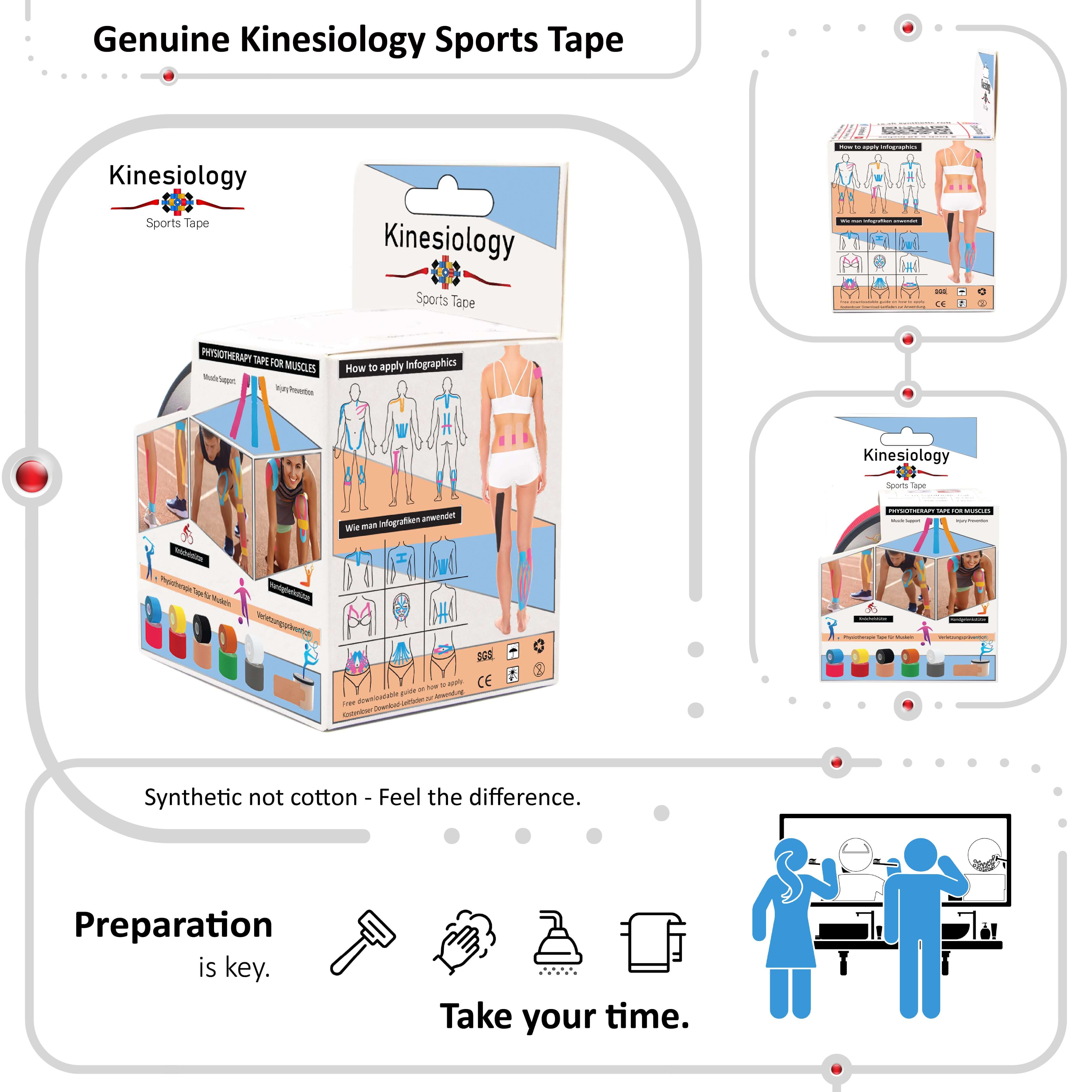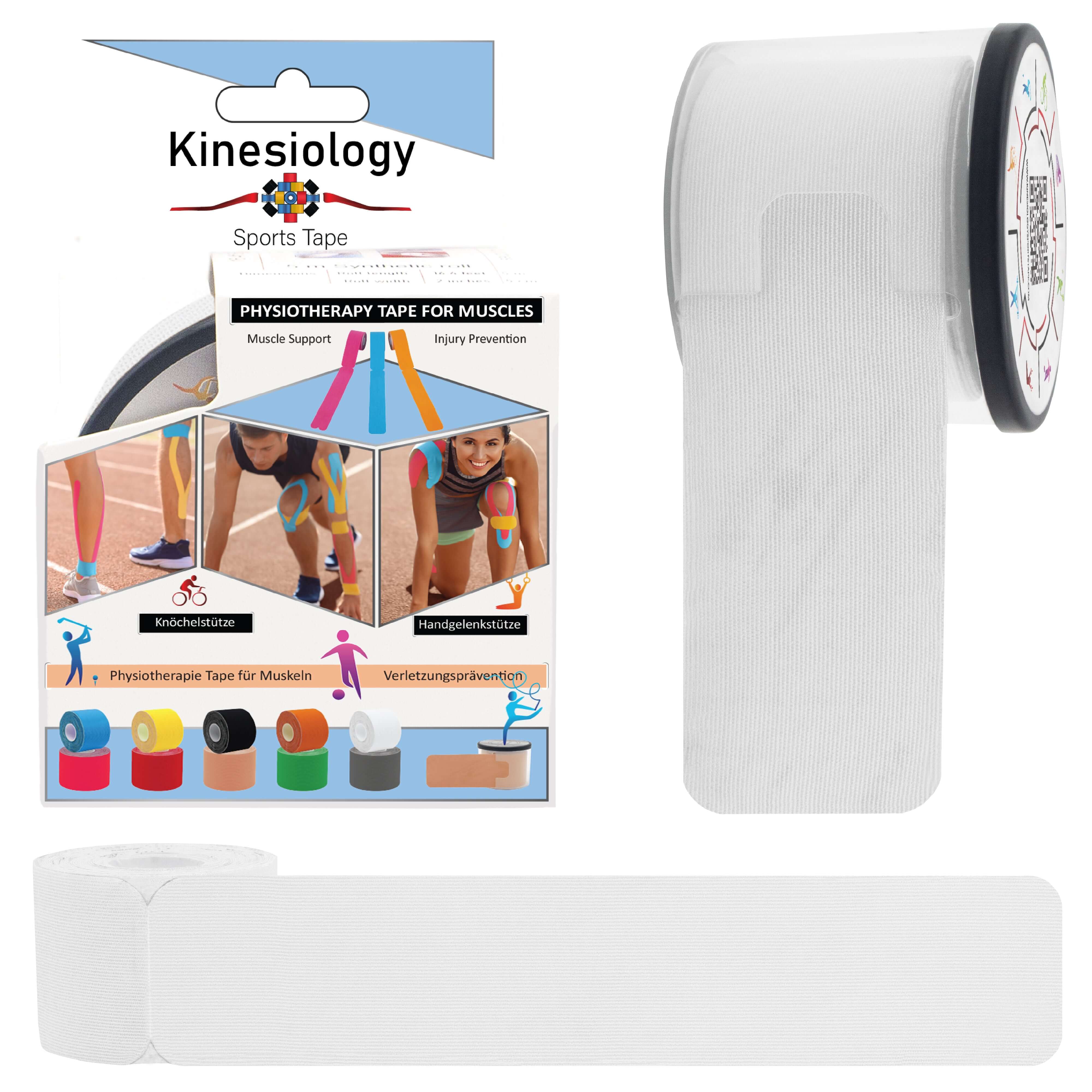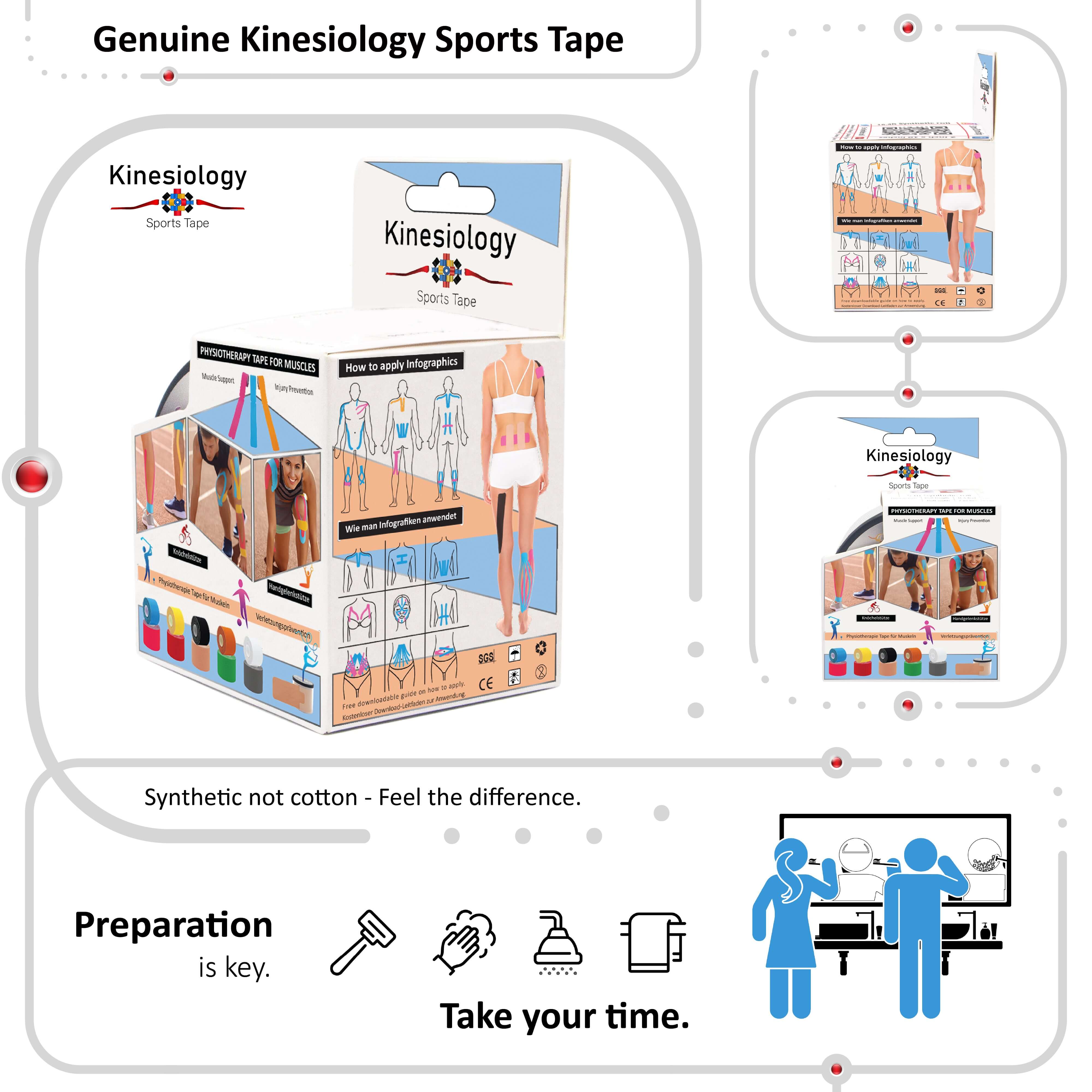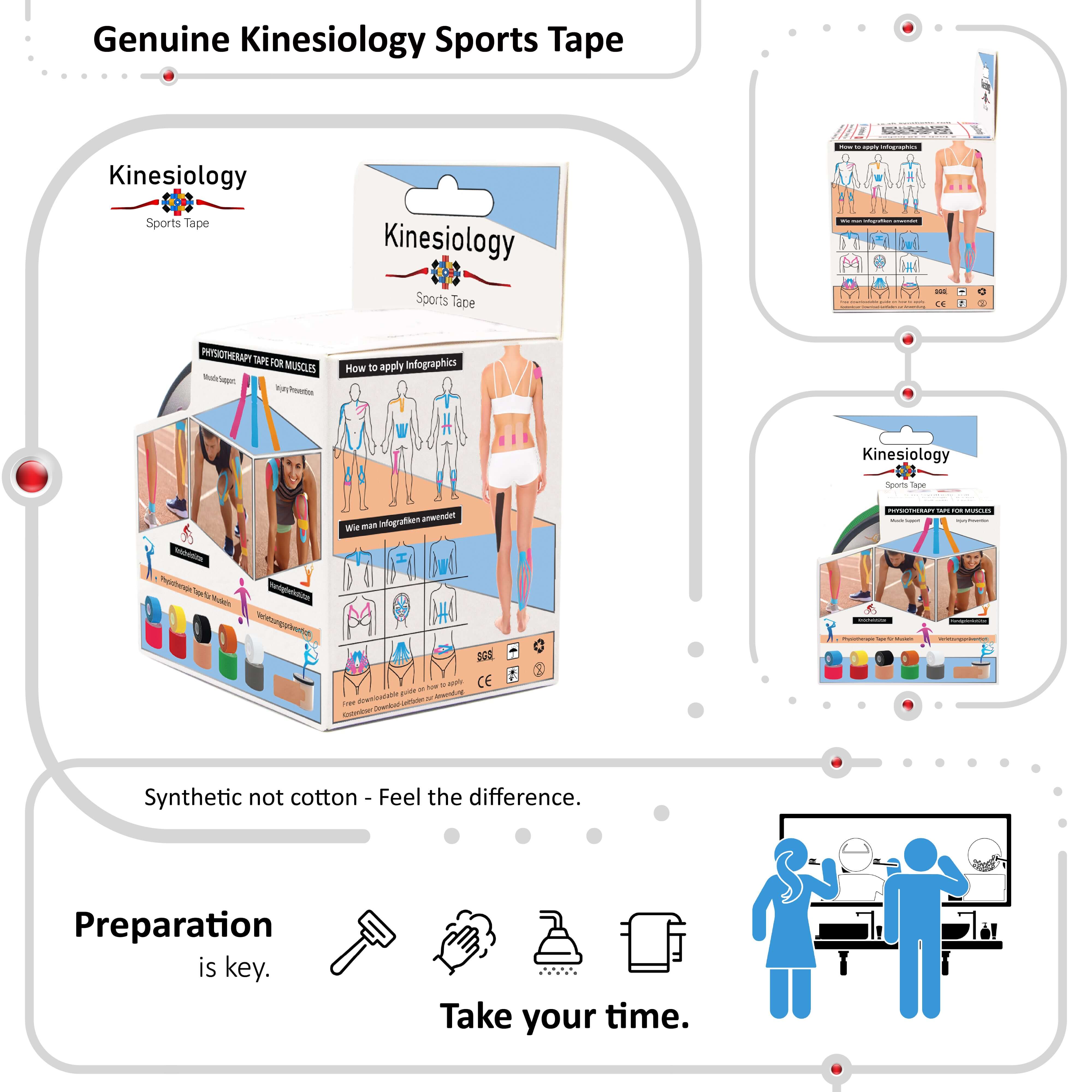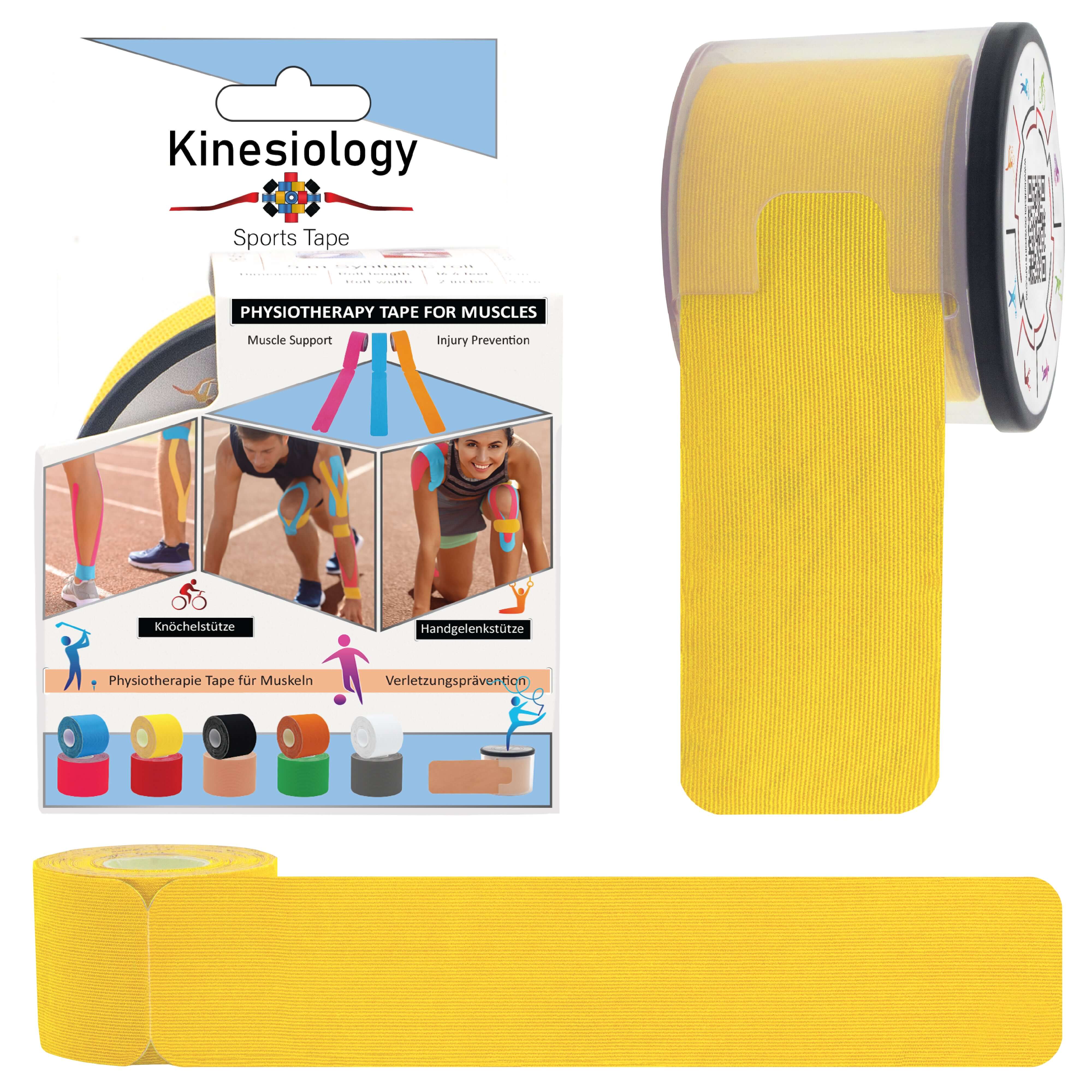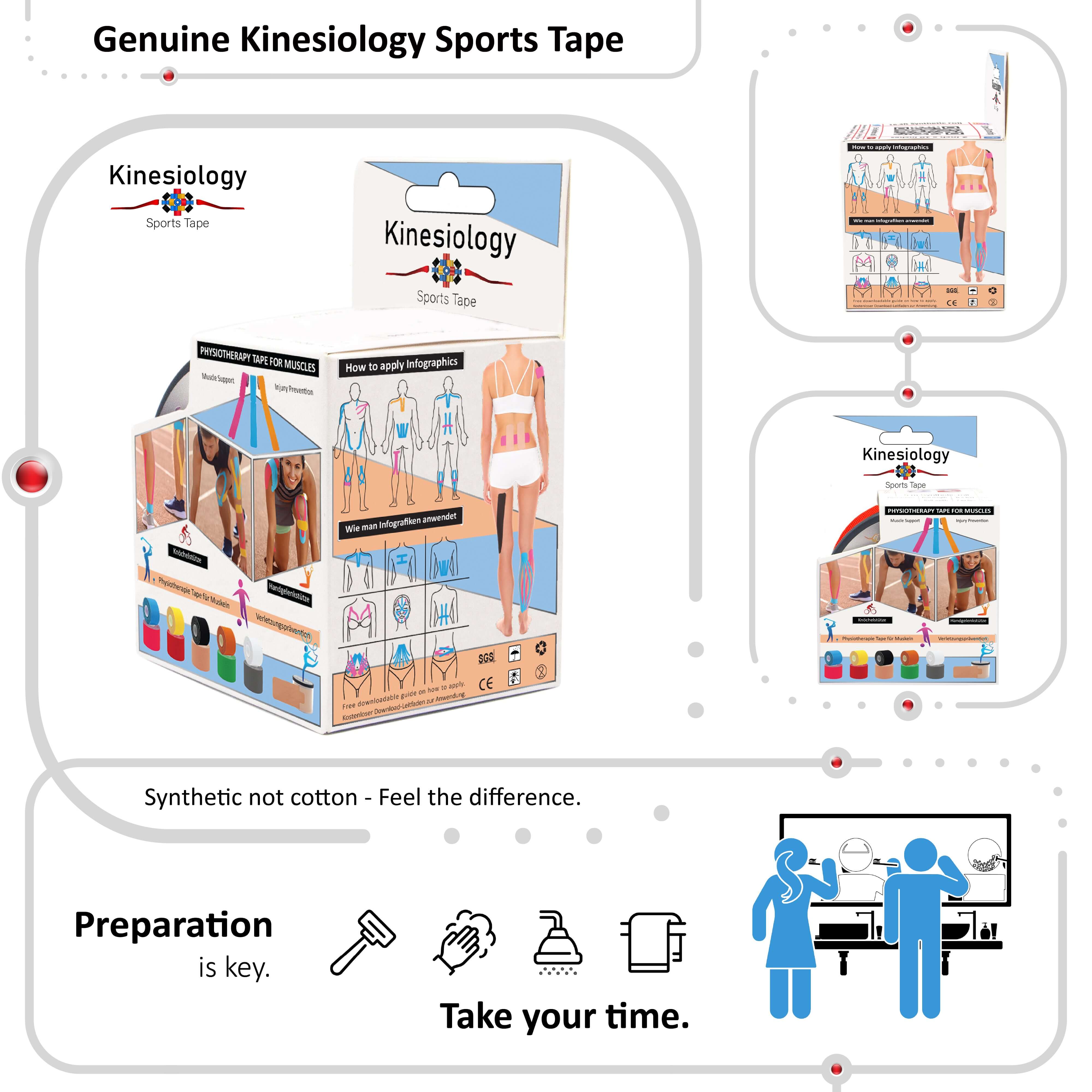
Uses of Kinesiology Tape

Kinesiology tape, with its vibrant colors and growing popularity, has become a fixture on athletes and everyday people alike. But this isn't just a flashy accessory – kinesiology tape boasts a range of potential uses designed to improve your well-being. This blog explores the diverse applications of kinesiology tape, from pain relief to performance enhancement.
Understanding Kinesiology Tape:
Kinesiology tape is a thin, elastic adhesive tape designed to mimic the properties of human skin. It allows for a full range of motion while providing support and promoting circulation. Kinesiology tape comes in various colors and designs, but the color itself doesn't affect its function.
A Multifaceted Approach to Pain Relief:
One of the most common uses of kinesiology tape is for pain relief. It may help alleviate pain from a variety of conditions, including:
- Muscle soreness: Kinesiology tape can provide support to overworked muscles, potentially reducing tension and discomfort.
- Joint pain: The tape may help stabilize joints, reduce inflammation, and improve proprioception, leading to less pain during movement.
- Headaches: Kinesiology tape applied to specific areas of the head and neck may help reduce tension headaches.
- Menstrual cramps: By potentially improving circulation and reducing inflammation, kinesiology tape may offer some relief from menstrual cramps.
Enhancing Performance and Recovery for Athletes:
Athletes have embraced kinesiology tape for its potential to improve performance and aid recovery. Here's how:
- Improved proprioception: Kinesiology tape can provide sensory input to the skin and underlying tissues, enhancing an athlete's body awareness and coordination.
- Reduced muscle fatigue: By supporting proper muscle function and potentially improving blood flow, kinesiology tape may help athletes perform for longer durations.
- Enhanced joint stability and range of motion: Kinesiology tape can provide support to joints, potentially minimizing the risk of injuries while allowing for a full range of motion.
- Faster recovery: Kinesiology tape may promote blood flow and reduce swelling, potentially aiding the healing process after injuries.
Beyond Pain and Performance:
Kinesiology tape offers a range of other potential uses:
- Postural support: The tape can be used to activate specific muscles or inhibit overactive ones, promoting better posture and alignment.
- Injury prevention: Kinesiology tape may provide support to weak or vulnerable areas, potentially improving proprioception and joint stability to prevent injuries.
- Lymphatic drainage: Kinesiology tape application techniques can potentially help stimulate the lymphatic system, promoting the removal of waste products and fluid build-up.
Important Considerations:
- Not a substitute for medical care: While kinesiology tape can be a helpful tool, it's not a replacement for proper medical diagnosis and treatment. Consult a healthcare professional for any pain or injuries you're experiencing.
- Application is key: Proper application techniques are crucial for maximizing the benefits of kinesiology tape. Consider consulting a physical therapist or athletic trainer to learn how to tape for your specific needs.
Exploring Kinesiology Tape's Potential:
Kinesiology tape offers a drug-free and versatile approach to pain management, performance enhancement, and overall well-being. By understanding its diverse uses and applying it correctly, you can unlock the potential of kinesiology tape to support your body and optimize your health.
Up Next: Kinesiology Tape Application Techniques!
Our next blog will equip you with the knowledge to apply kinesiology tape effectively. We'll explore common application methods and resources to help you get started on your kinesiology tape journey!

